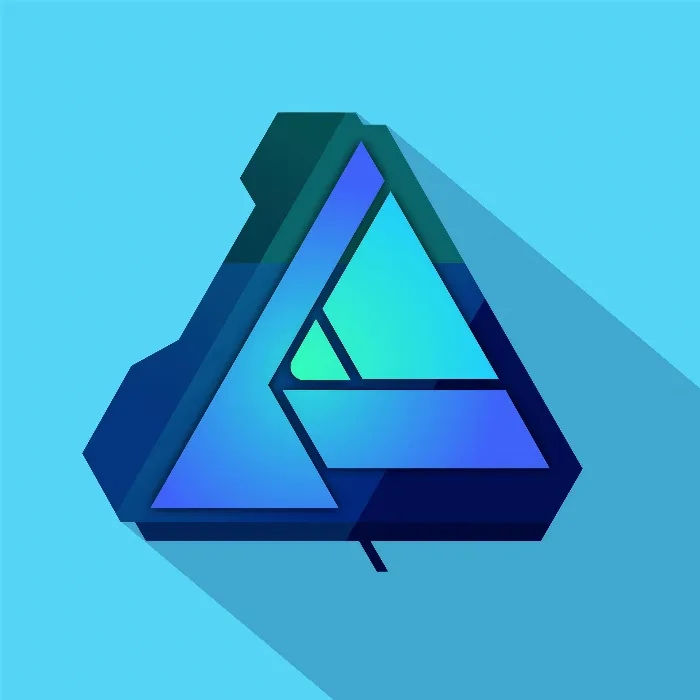The User Interface of Affinity Designer offers a variety of options that you can use to customize your workspace according to your preferences. In this tutorial, you will discover the different components of the user interface and learn how to effectively customize them to work more efficiently. Let's dive right in!
Main Insights
- The user interface of Affinity Designer is modular and can be customized individually.
- The menu and toolbar provide access to important functions and tools.
- Context bars change depending on the current tool, thus increasing your efficiency.
- Panels can be resized, moved, or hidden.
- An optimal arrangement of the workspace increases your productivity.
Step-by-Step Guide
1. Explore the Menu Bar
The top bar in Affinity Designer is the menu bar. Here you can find basic functions to create a new document, open, or close existing documents.
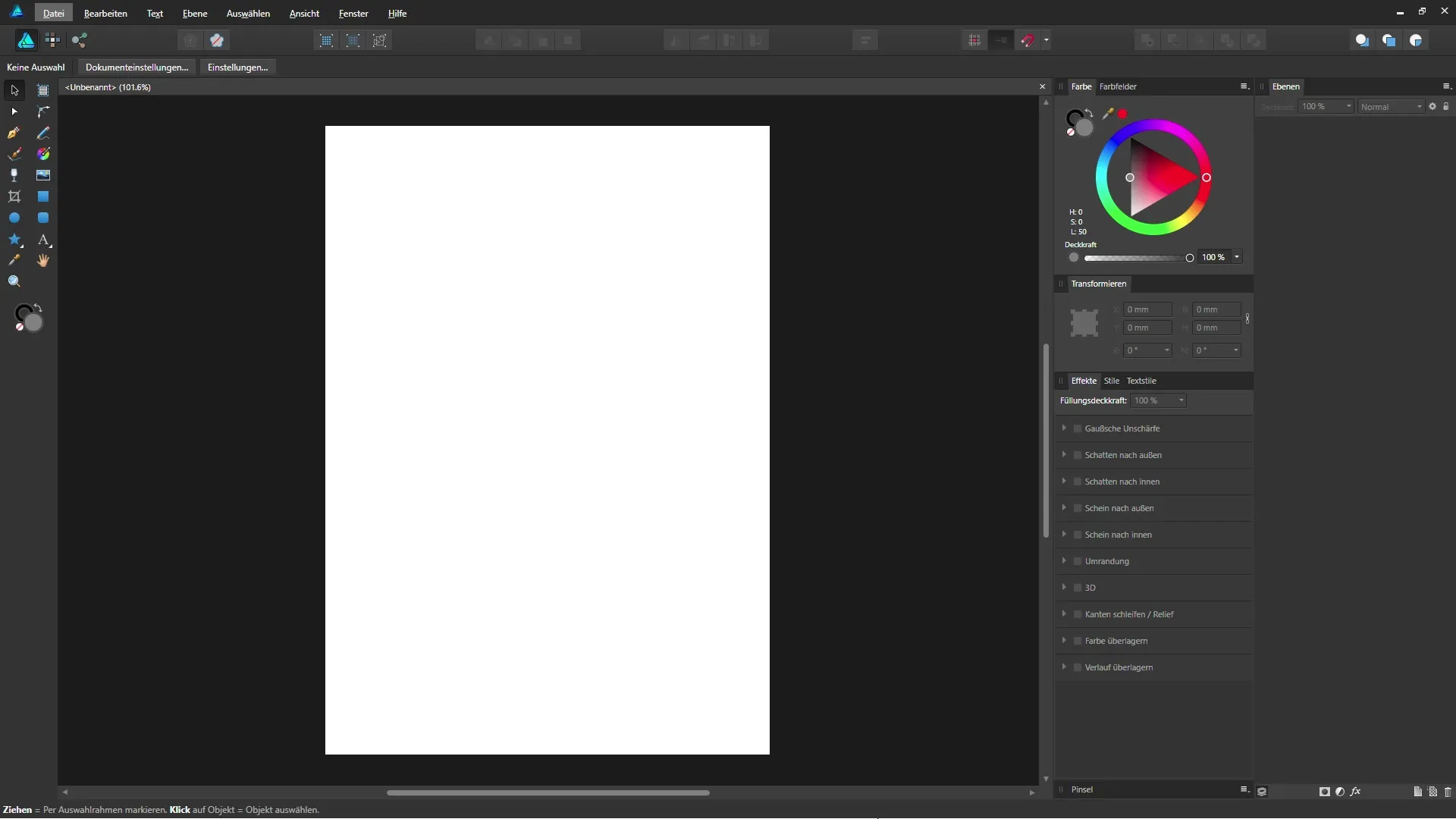
Click on the “File” menu and discover the functions that help you manage your documents. You’ll find that the “Edit” menu also offers useful options like Paste and Undo.
2. Understand the Toolbar
Below the menu bar is the toolbar, which provides you quick access to various tools. Here you can switch between what are known as “personas.”
For your current project, it is important to know which persona you are using. For example, there is the “Draw Persona” for drawing and the “Pixel Persona” for image editing.
3. Use the Context Bar
Once you select a tool from the toolbar, the context bar changes. This provides specific options tailored to the selected tool.
For instance, with the pen tool, you can set the fill and stroke, while the rectangle tool offers different options.
4. Manage Panels
The user interface also provides various panels that you can show and hide. You will find them on the right side of your screen.
Depending on your preferences, you can rearrange these panels. It is advisable to keep frequently used panels within reach to see multiple steps simultaneously.
5. Customize Panels
You can visually customize panels using the “View” menu. Here you can select which panels should be displayed. For example, to hide or show the Brushes panel, simply go to “View” > “Studio.”
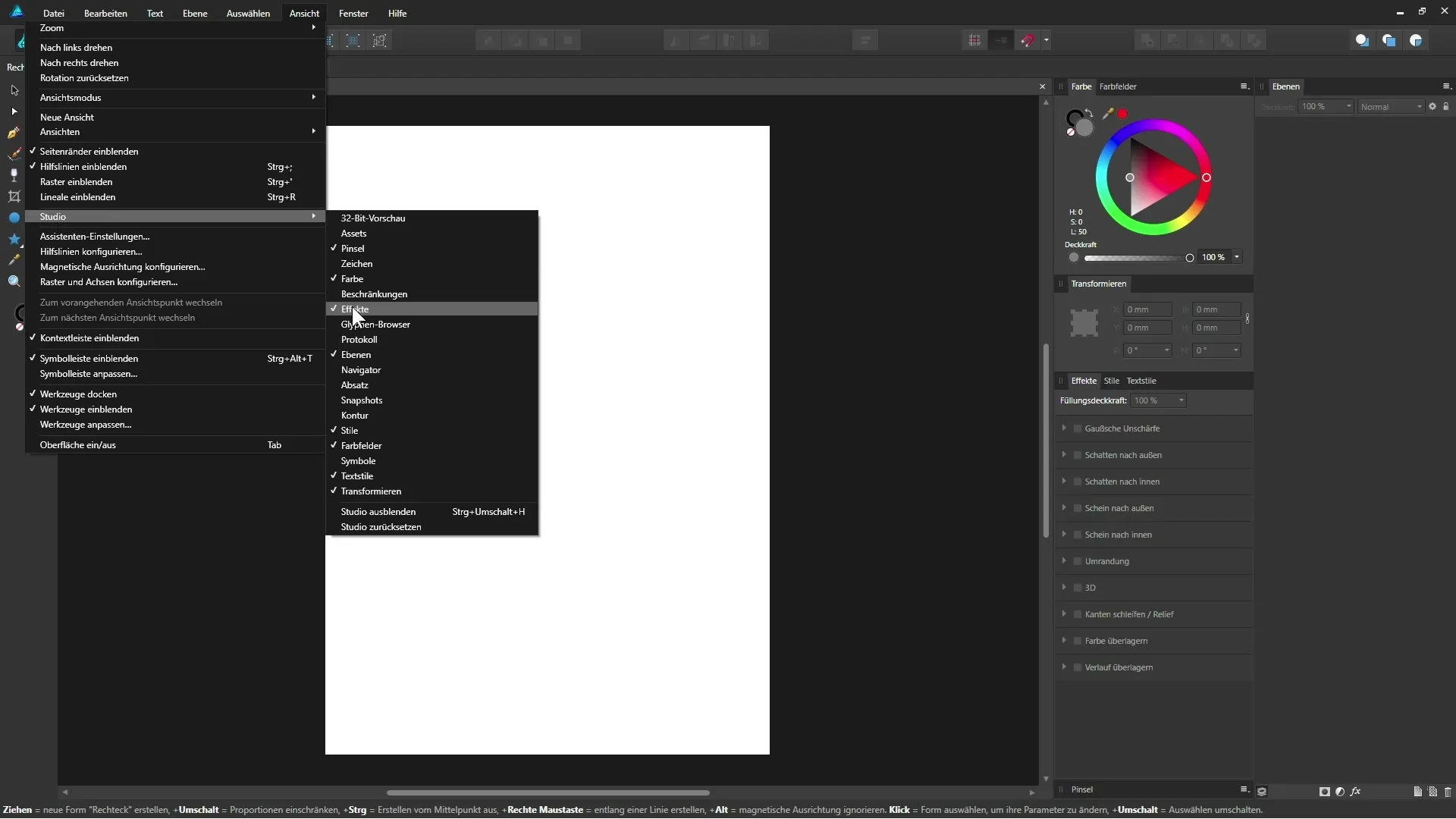
If you work with multiple monitors, arrange your panels in a way that is most practical for your workflow.
6. Personalize the Toolbar
The toolbar itself can be customized for you. Right-click on the toolbar and select “Customize Toolbar.”
You can add or remove icons depending on which tools you use more frequently.
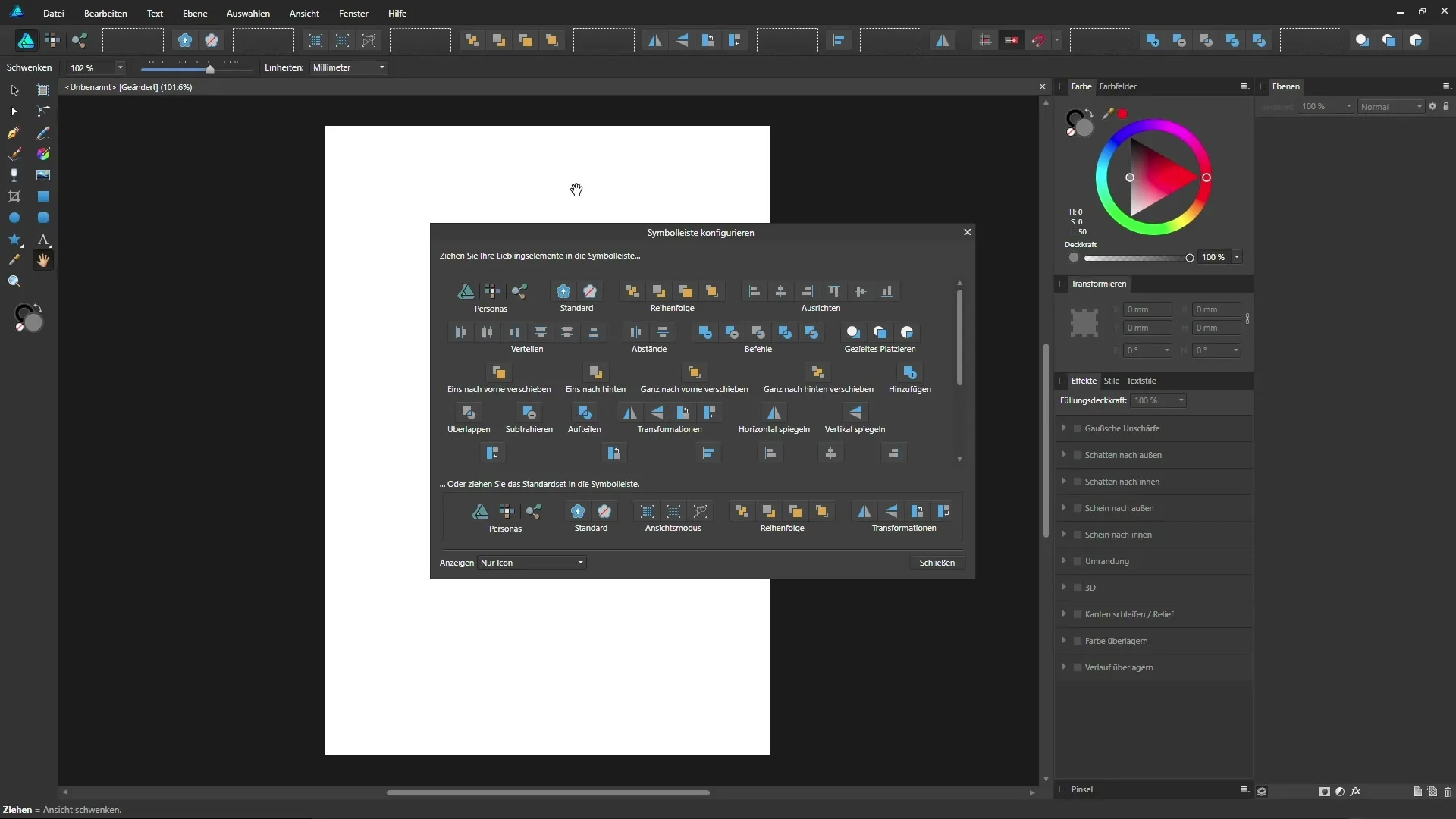
7. Save Customized Workspace
After customizing your workspace according to your preferences, you can take a screenshot of your settings. This helps you have a reference if you want to make changes later.
Do you want to return to the default settings? Simply use the “Reset” function in the “Tools” menu.
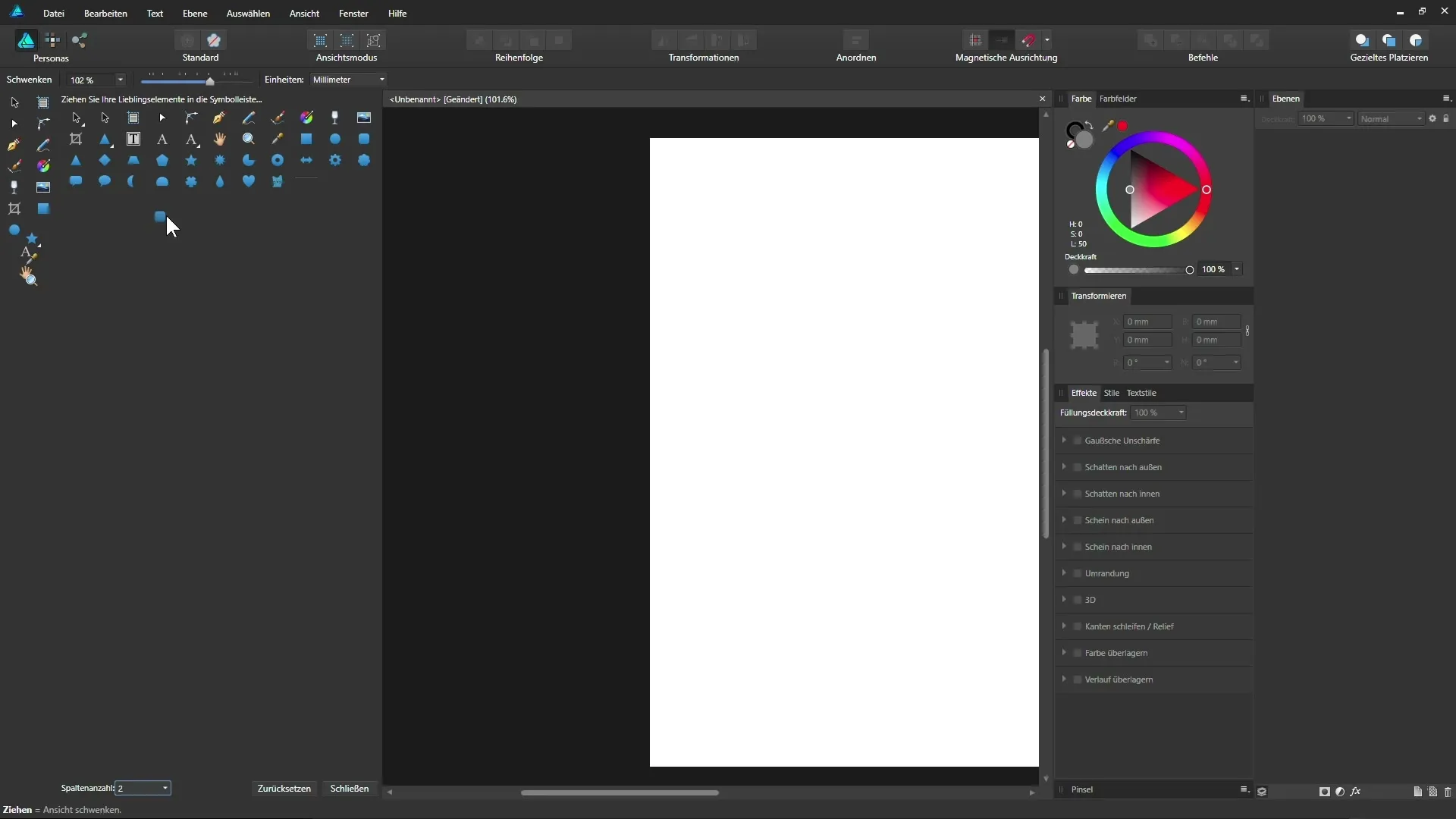
Summary – Optimize the User Interface of Affinity Designer
Affinity Designer provides you with the flexibility to design the user interface according to your specifications. By thoroughly understanding the menu bar, toolbars, and panels, you can significantly optimize your workflow. Experiment with different layouts to find what works best for you.
Frequently Asked Questions
How can I customize panels in Affinity Designer?You can hide, adjust, and rearrange panels by going to “View” and then “Studio” to select the desired fields.
What is a persona in Affinity Designer?A persona is a specific working environment within Affinity Designer that is optimized for particular tasks. For example, there are personas for drawing, painting, and exporting documents.
Can I customize my toolbar?Yes, you can customize the toolbar by right-clicking on the toolbar and selecting “Customize Toolbar.” Here you will find options to add or remove tools.
Is there a way to save my settings?Yes, you can take a screenshot of your workspace to use it later as a reference. If you want to reset your changes, there is a corresponding function in the menu.
